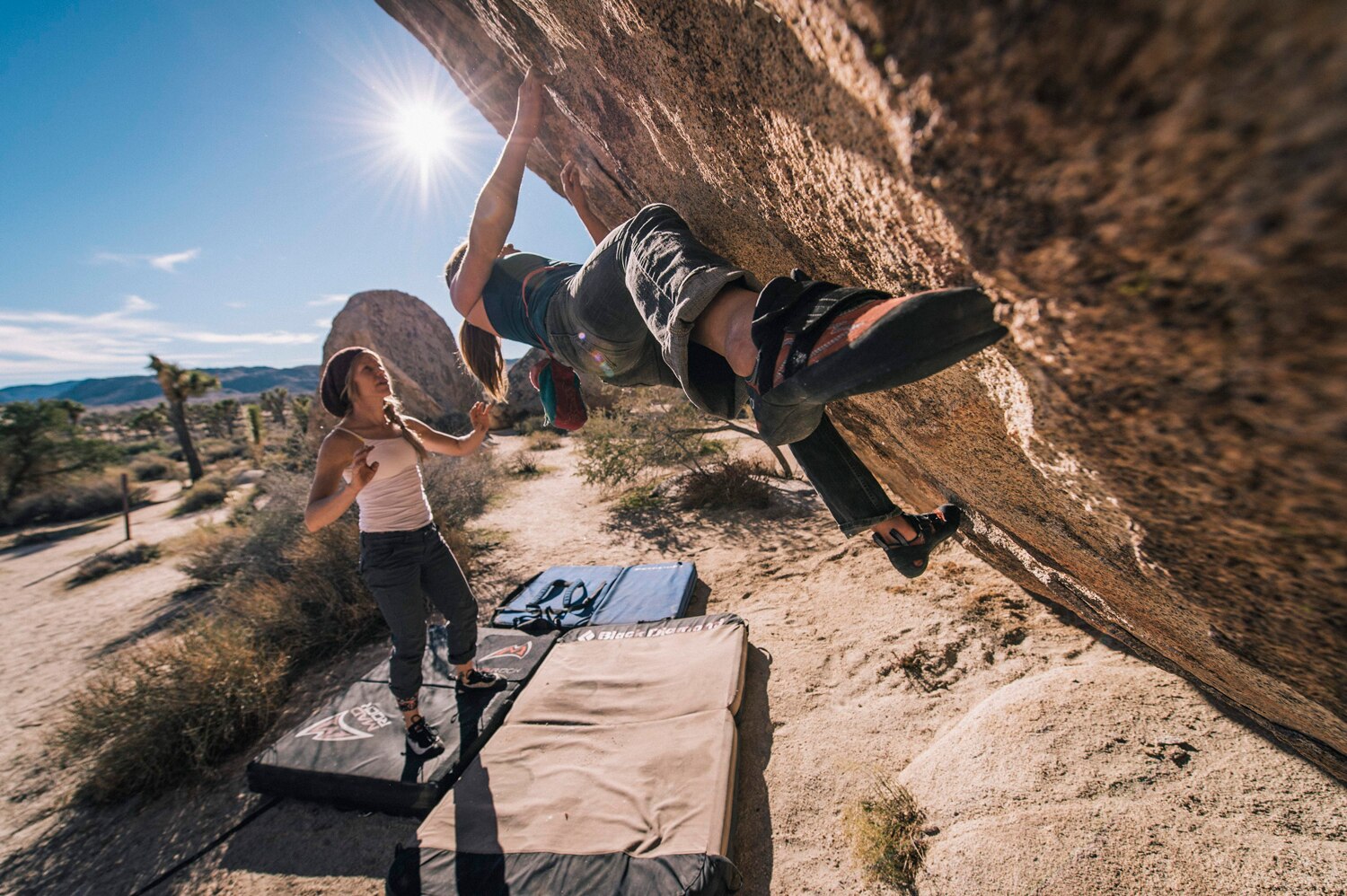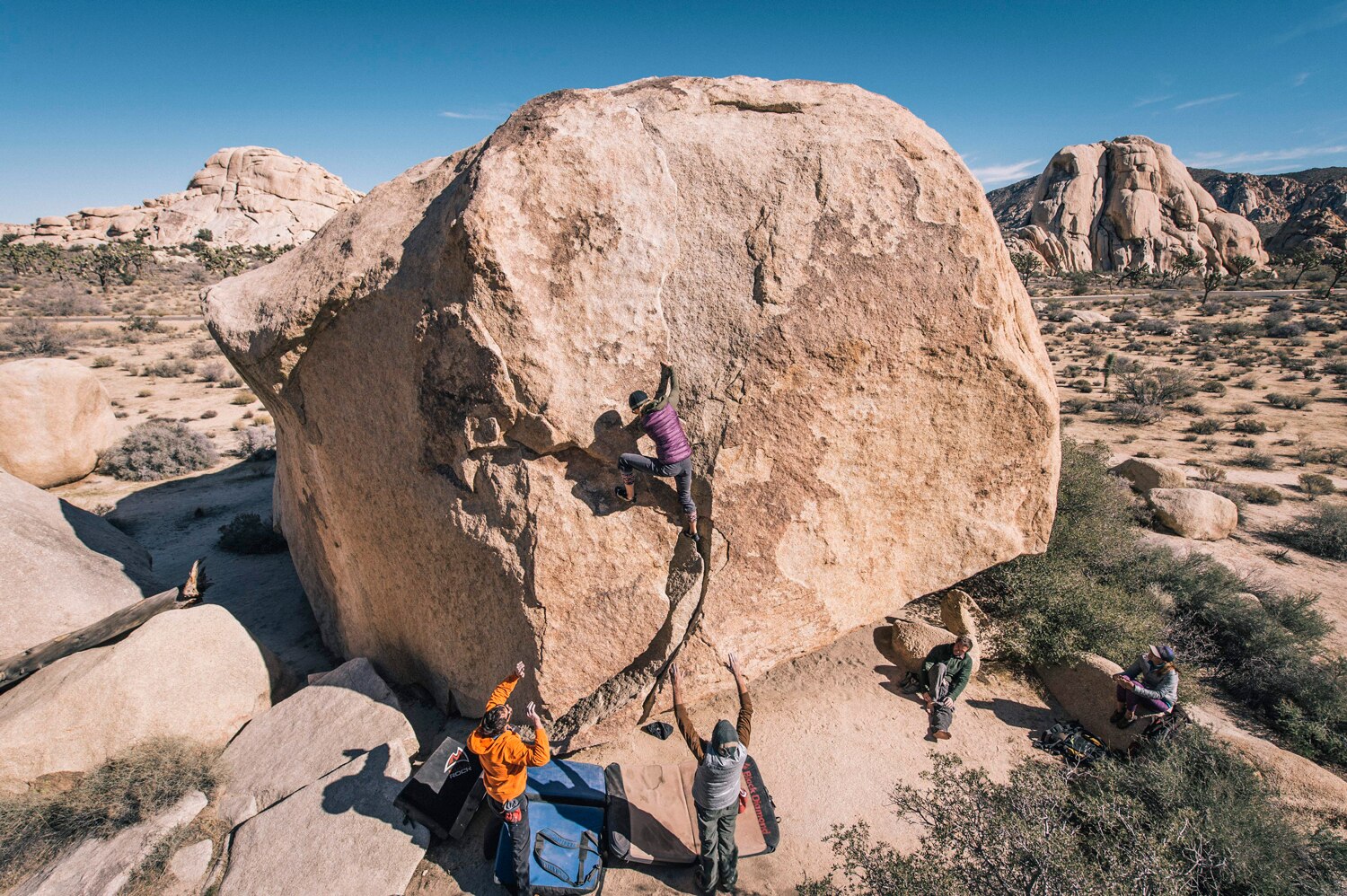Climbing is one of the fastest growing sports in the country. With the number of climbers at nine million and growing, overuse injuries are occurring at an alarming rate. It's always better to prevent injury than to deal with the painful consequences. That's why if you're a climber, learning these five concepts of prevention can help you climb injury free.
1. Have a Daily Prevention Program
Perform Static Stretches
Due to the repetitive nature of climbing, your muscles can become overdeveloped and tight. Tight muscles can pull and strain the tendons where they attach to the bone, and can increase resistance to movement. This makes it more challenging to reach distant holds with your arms and legs. Static stretching on a daily basis is an effective way to lengthen your muscles and increase your overall flexibility. Static stretches are typically held for up to 30 seconds. Make sure to stretch your hips, shoulders, wrists and fingers.
Perform Antagonist Exercises
Antagonist muscles oppose the muscles that you primarily use to climb. They create movement in the opposite direction. Weak antagonist muscles can leave you highly susceptible to overuse injury. Strengthening your antagonist muscles daily balances your body and can decrease the likelihood of getting hurt. Exercises such as rowing, triceps presses, and wrist and finger extensions help develop your antagonist muscles.
Read an in-depth discussion on antagonist muscle exercises.
2. Warm Up Properly
Do Dynamic Stretches Before Climbing
Dynamic stretching is the most effective method of stretching prior to an activity. The stretch is performed by taking the muscle through a full range of motion lasting 2-3 seconds and then returning to the starting position. It is important to perform dynamic stretching for ten minutes prior to climbing on the wall. Dynamic stretching will increase the blood flow to your muscles, tendons and joints, and can help prevent injury.
Start with a dynamic warm-up routine.
3. Train Like You Climb
Engage in Mirror Movement
Many training exercises don't reflect your body's position while climbing and therefore don't translate into meaningful climbing improvements. In order for an exercise to carry over to climbing, the body position in the exercise must be similar to the body position when you climb. Exercising in this way will produce more meaningful results.
Get started with Rock Climbing and Bouldering: Training Tips and Exercises.

4. Be Mindful of Your Movement
Learn Correct Climbing Technique
- Keep good posture
- Bring your hips into the wall
- Straighten your arms
- Push with your feet
- Climb like you crawl
5. Listen to Your Body
Allow Adequate Recovery Time
If an area of your body is sore or feels tweaked, rest and allow it to recover. Although recovery time is highly variable for each individual, many climbers need at least 48 hours to fully recover from a challenging workout. If you are feeling overly fatigued after training sessions and have some minor pain, don't just climb through it. Take the time to rest and rehabilitate so that you can continue to climb injury free.
Learn more injury prevention tips for climbers at www.theclimbingdoctor.com.
